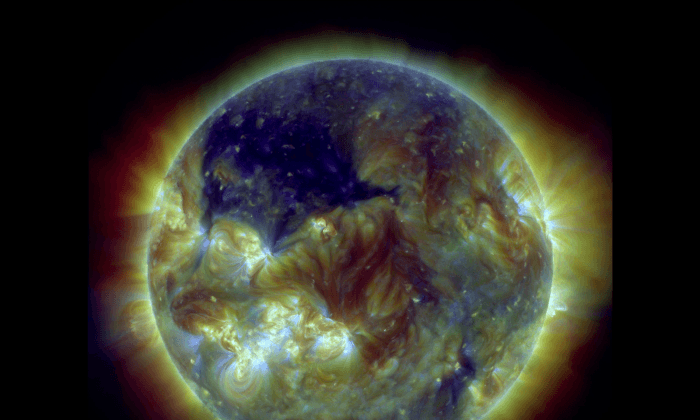Coronal hole in sun: A hole in the sun about 400,000 miles across was observed by NASA on July 18.
Not to worry, this is normal. Though this hole—spanning the length of 50 Earths side-by-side—is larger than any NASA has observed in the last year or so. And, it is moving closer to the sun’s north pole—a phenomenon that happens every 11 years as the solar cycle comes to an end and the sun reaches a maximum of activity.
This maximum is expected for late 2013 or early 2014.
Holes in the sun, known as coronal holes, can have the effect of generating some aurora on Earth, says NASA.
The holes spew solar material in winds roughly twice the speed found on other parts of the sun. The magnetic field opens up to produce the hole.






Friends Read Free